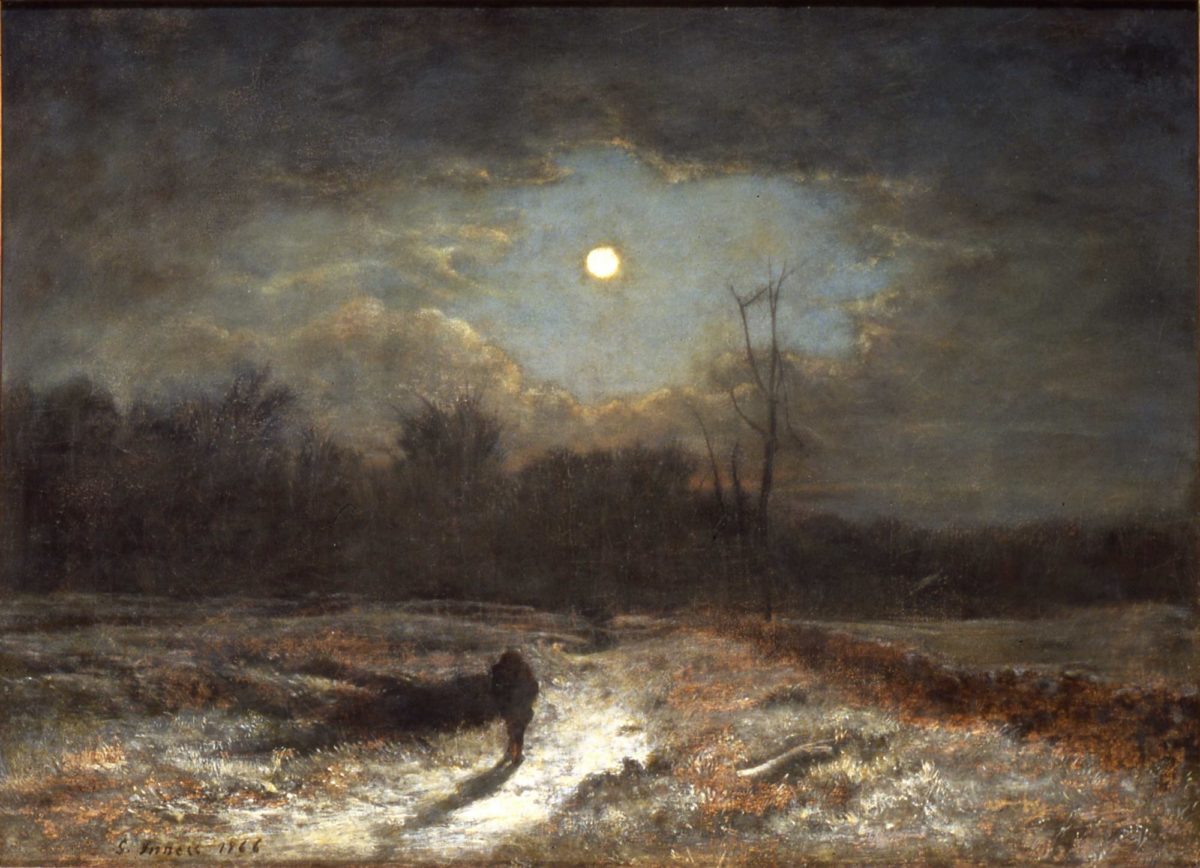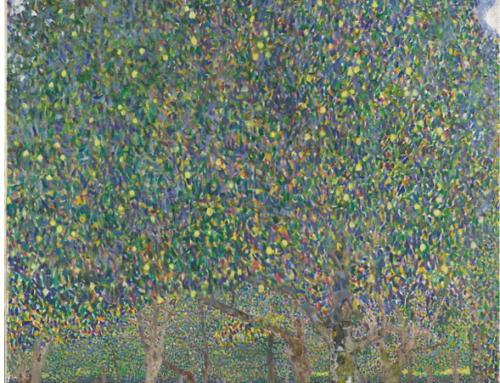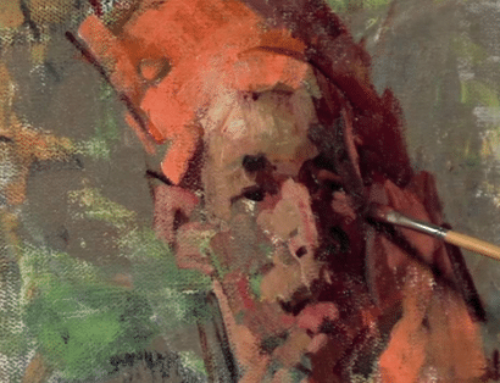During a recent studio move, I discovered “treasures” of the most exotic description buried in the 10+ years of clutter.
Among the forgotten “early masterpieces,” plastic apples (still life props), and fragments of my now teenaged son’s “Happy Meal” toys, one thing stood out.
It was a printout of an anonymous list of 10 do’s and don’ts under the heading “On Painting.” No idea who wrote it or how I came to have a copy, but I promptly tacked it onto the wall of my new art space. It’s that good. (I’ve since been informed the list is the invention of Tonalist master Dennis Sheehan. Thanks, Dennis!)
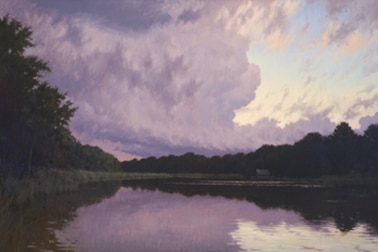
Lisa Egeli, Goodness, oil, 48 x 72 inches
I’ve since typed it back into digital form, added my two cents, reworded some grammatical awkwardness, and tacked on a bonus, 11th maxim. Each one of these could be (and likely will become) a separate installment of Inside Art.
Perhaps someone reading this will cut and paste the list and – who knows – maybe even print it out. That way it can get lost in a pile of “important stuff” inhabiting some obscure corner of someone’s own art-making space – where it will wait to be discovered a decade hence and shared anew.
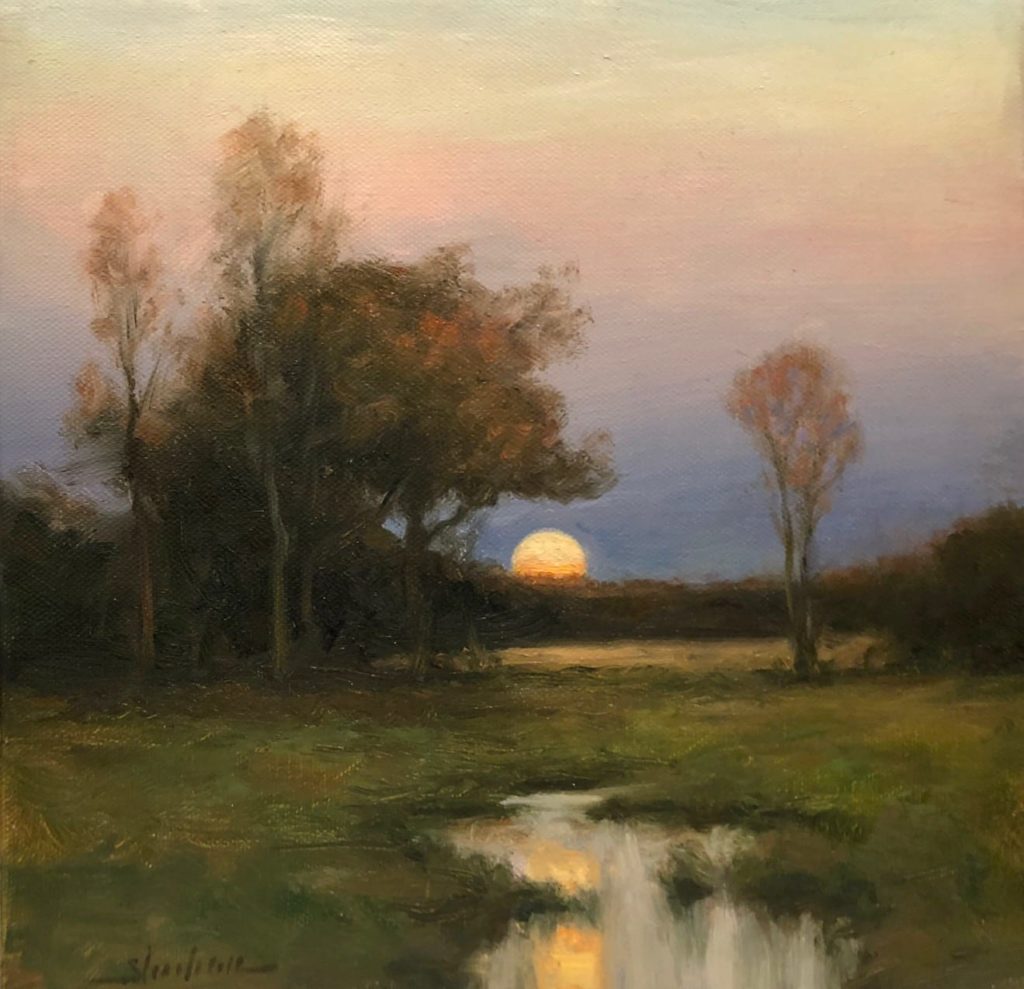
Dennis Sheehan, Sunset, oil, 10 x 10 in.
ON PAINTING
- First get the viewer’s attention – preferably from a distance.
- The more time you get the viewer to spend in front of your painting, the more successful you will be.
- Within your painting there should be a continuous roadmap so the viewer travels throughout. Actively prevent the eye from leaving your painting.
- KEEP INTEREST EVERYWHERE! (Every inch should be “activated” with variations in color, texture, or brushstrokes – something)
- Don’t give them too much to look at right away. Keep some things hidden, vague or obscure. Reveal them only after they search a while.
- PAINTING IS ABOUT FEELINGS. Paint with them.
- The more you master the grays (muted color tones), the more refined your painting will become.
- Paint more from ART than from NATURE. Pay more attention to what’s on your canvas than what’s in front of you.
- Listen to criticism from anyone – but always take it with a grain of salt.
- Check your painting for:
- Balance (visual weight)
- Harmony (organic unity)
- Variety (natural interest)
- Rhythm (movement, directional lines)
- Pattern (calculated repetition, call and response, visual rhymes)
-Dennis Sheehan
- 11. Technique is just technique. It’s what the artist puts IN it that matters.
Of course, technique is essential. For a solid foundation, check out these “Basics” titles in our instructional DVD library.
What’s it like to GO BIG?

A 40 x 60-inch canvas he saw in a local art supply store lured oil painter Ryan Jensen into the world of big paintings. “I wondered what it would be like to take that outside to paint — how would I even put it on my easel,” he recalls. “Well, I’d never know if I didn’t try, so I decided that the next time I went in that art store, I was going to get it.”
“As a painter, I have a certain discipline that was birthed in the Corps,” Jensen says. “I’m not quite sure if anyone understands the dedication that I put forward on my art-making. I look at hundreds of paintings online every day, talk to my mentor, and paint. Just talking about painting gets me really souped up because it’s my mission. When I was a Marine, my mission was to be the best Marine I could be — to stay healthy and keep my guys alive. Now my mission is to do a great painting and get better every day at it. If I don’t paint a good painting, then I have to learn from it. I’m not allowed to get too discouraged about it. And I’m not allowed to slow down.”

